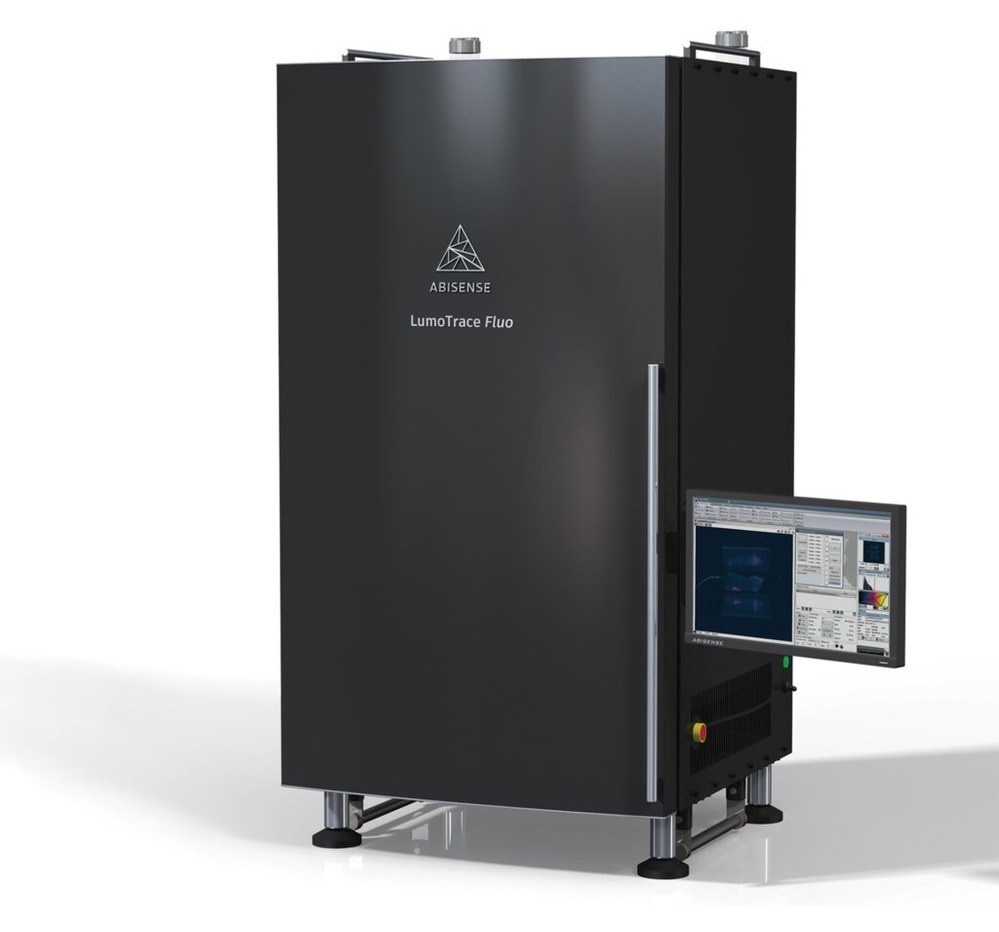Catalog
Search
472 products
View:
- Selected: 0Areas of use
- Selected: 0Item names
- Selected: 0Manufacturer
- Selected: 1Made in
- Selected: 0Additional
View:
472 products
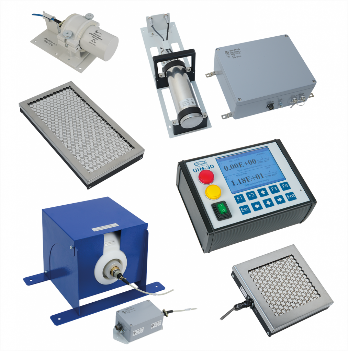
Universal measuring complex UIM-MD
Stationary complex for monitoring various parameters of the radiation situation, depending on the type of connected detection units:
- continuous monitoring of gamma and neutron radiation in rooms and workplaces;
- assessment of alpha and beta and gamma contamination of surfaces of objects, personnel clothing and small items.
Purpose:
measurement:
ambient dose equivalent power of photon and neutron radiation;
alpha and beta radiation flux densities;
surface activity of Pu-239 and Sr-90+Y-90 radionuclides;
alarm about exceeding the set thresholds.
Doza
Zelenograd
Produced in: Moscow
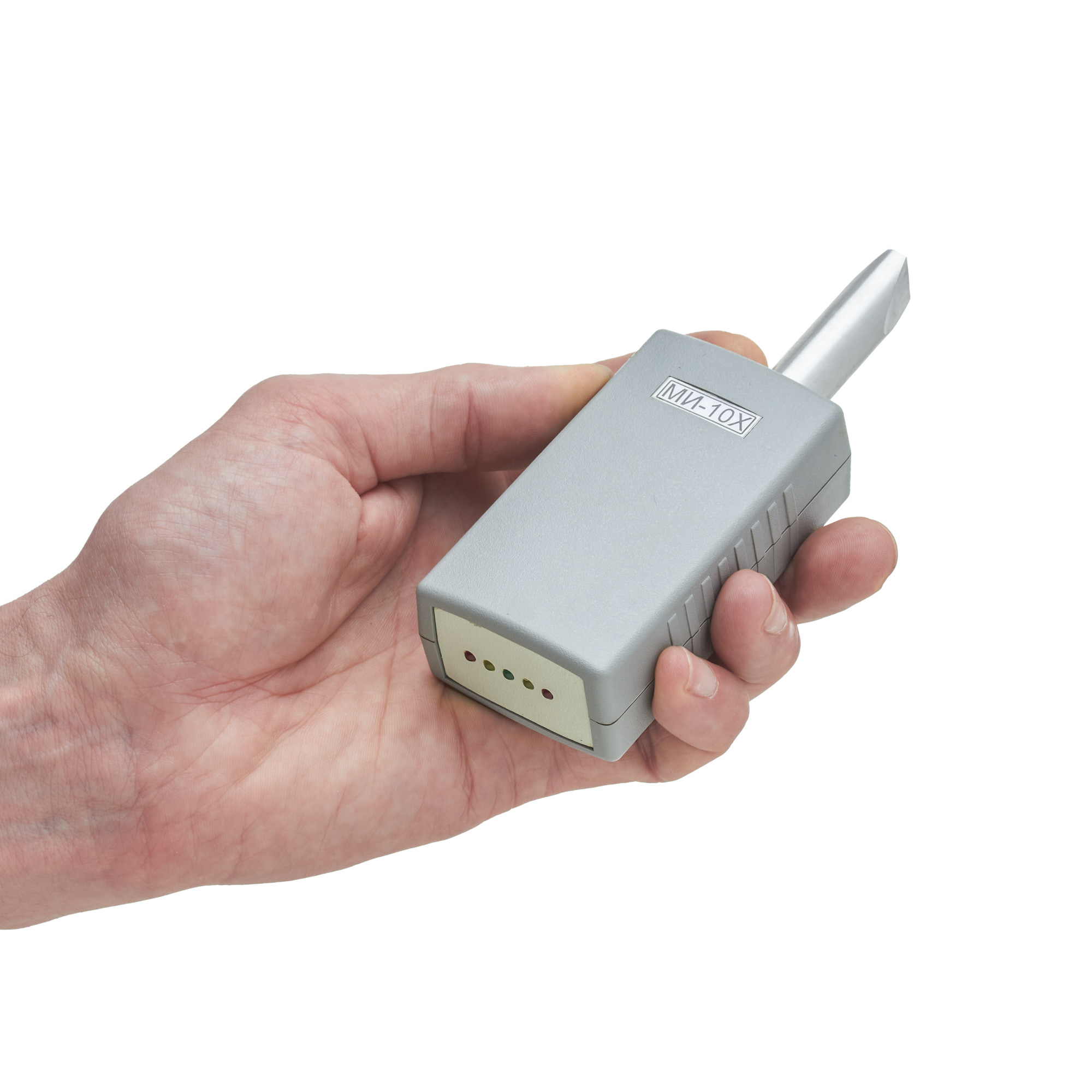
MI-10X Magnetic Indicator
from
22 500 ₽
Distinctive features.
Compactness
Autonomy
Maximum ease of handling
Energy saving mode
Technical specifications
Indication of induction levels, MT,:
weak magnetization 0...2
average magnetization 2...10
strong magnetization more than 10
Power supply 1 accumulator unit or PP3 battery
Current consumption, mA, no more than 8
Operating temperature range, °C -30...+50
Dimensions of the electronic unit, mm 90x50x32
Dimensions of the converter, mm 14x50
RII MNPO SPEKTR
Moscow
Produced in: Moscow
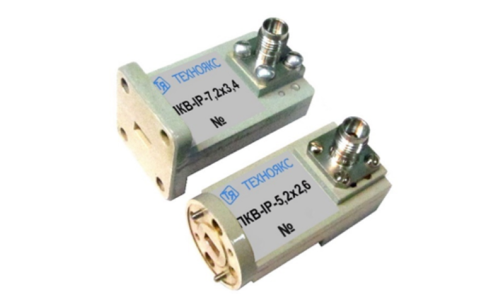
PKV-IP-5,2×2,6
Basic properties
Wide frequency range;
Small VSWR values.
Operating conditions
Operating temperature range from minus 10 to 50 ° C;
The relative humidity of the air is up to 98% at a temperature of 25 ° C.
Technical specifications
Waveguide cross section, mm 5.2×2.6
Type of coaxial connector (according to GOST RV 51914-2002) IP
Frequency range, GHz 37.50-50.00
VSWR 1.45
TEKHNOYAKS
Moscow
Produced in: Moscow
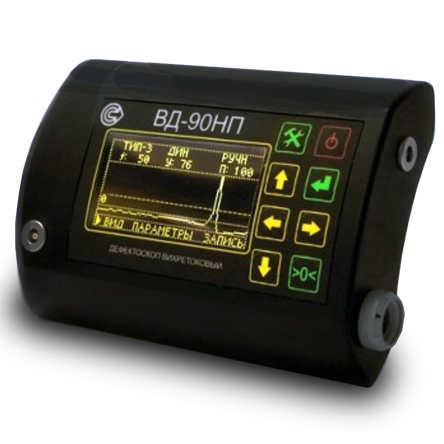
VD-90NP Eddy current flaw detector in the basic configuration
from
398 250 ₽
The principle of operation of the device:
The principle of operation of the flaw detector is based on the excitation of eddy currents in the controlled product and the subsequent release of a signal at the output of the converter, the amplitude and phase of which are determined by the secondary field of eddy currents.
Design features and advantages of the VD-90NP flaw detector.
The device has a small-sized case, which ensures its lightness, ergonomics and allows you to mount it on your belt or on your arm. The measurement is performed using a remote converter connected by a flexible cable. There are several types of converters for eddy current flaw detection of products made of different materials and different geometries. The large and bright display displays the selected operating modes and measurement results in text and graphic form. The VD-90NP is also characterized by:
high sensitivity (it detects cracks starting from 0.1 mm in size);
dust–and-moisture-proof housing, which makes it applicable for work in the field;
large operating frequency range;
maximum working clearance up to 10mm;
Bluetooth connection;
the ability to control products with high surface roughness, up to Rz320 class;
light and sound indication of defect detection;
wide operating temperature range from –30°C to +50°C;
autonomous low-voltage power supply;
long continuous operation time from one set of batteries;
compliance with the standard GOST R ISO 15549-2009 (ISO 15549:2008).
The use of a microprocessor-based hardware and software platform provide it with the following operational characteristics:
automatic adjustment when measuring conditions change, including compensating the influence of the gap;
built-in calibration modes;
saving the measurement results in the internal memory of the device;
a large number of stored programs: sets of parameters and measurement modes, both preset and saved by the user so as to repeatedly monitor the same type of products;
The Bluetooth 2.0 wireless communication module allows the device to be used in conjunction with an external laptop or mobile device for remote control, transmission of measurement results for further storage, printing, documentation and analysis.
Scope of application:
The eddy current method is suitable for non-destructive testing and detection of microcracks in products and parts made of any metals and alloys of complex shape, with high surface roughness, through non-conductive coatings, as well as for checking welded joints. The flaw detector can be used to control parts and assemblies of aviation equipment.
The VD-90NP eddy current flaw detector is used for quality control and preventive examination of:
- components and parts of rolling stock at railway transport enterprises: wheel sets, auto coupler housings, side frames, spring beams, labyrinth rings, pulleys;
- pipes, profiles, rods at rolling mills at the output control, and at the input control of consumers of products;
- products made of aluminum and titanium alloys with multilayer coatings at enterprises of the aviation and aerospace industry;
- cables, beams, critical components of equipment (cranes, lifts) in construction;
- main pipelines in order to detect stress corrosion.
A wide range of operating temperatures, dust and moisture protection (IP54 degree of protection), autonomous low-voltage power supply, a long time of continuous operation of the device allows it to be used in the field at low temperatures and under precipitation (rain, snow).
Basic kit:
• 1 electronic unit for the VD-90NP eddy current flaw detector;
• 1 Ia5.125.052 (Type-2) eddy current converter;
• 1 converter cable;
• 1 charger with batteries;
• 1 hand strap;
• 1 Ia8.896.104 sample with artificial defects;
• 1 Ia8.896.035 coating sample;
• 1 storage and carrying case;
• 1 documentation set.
RII MNPO SPEKTR
Moscow
Produced in: Moscow
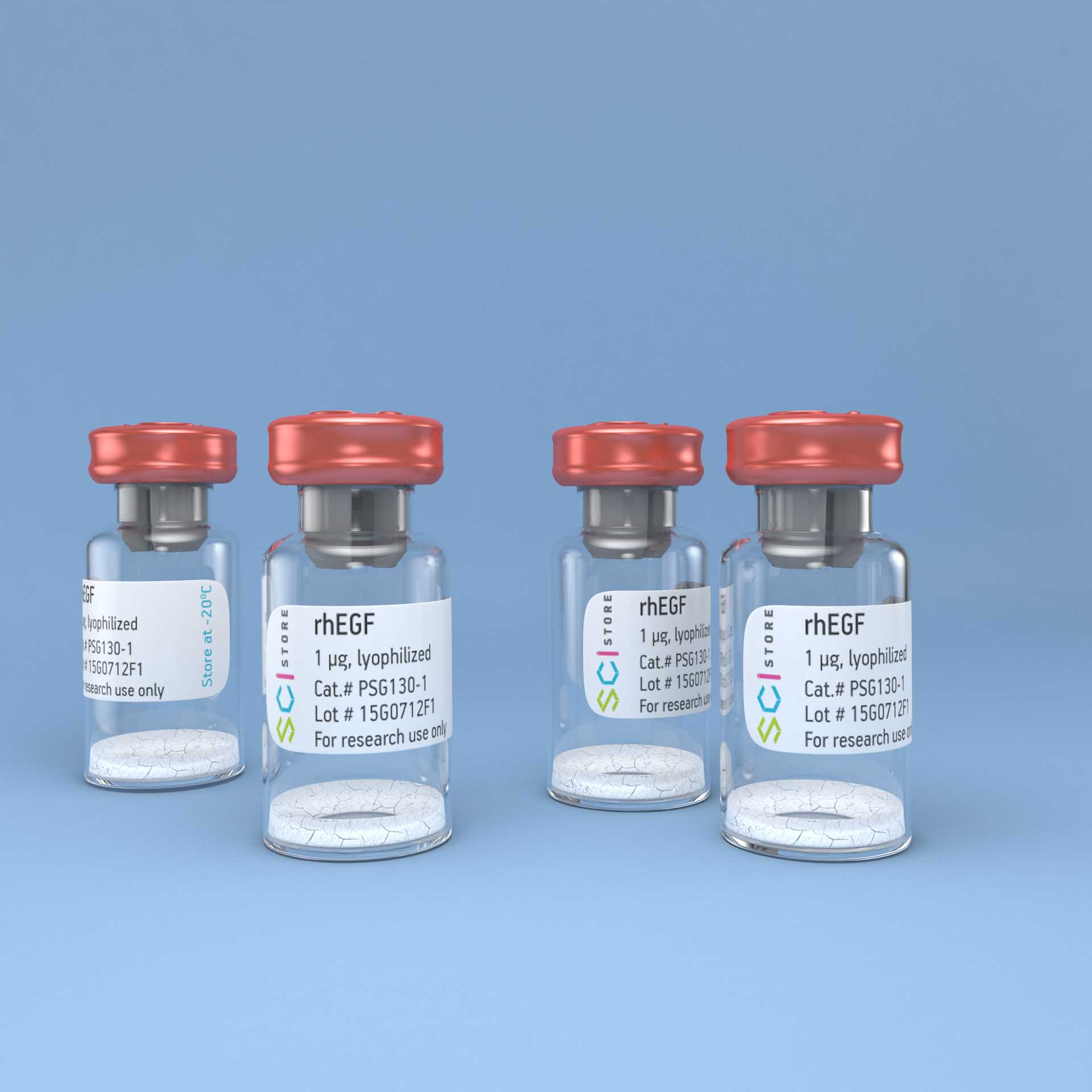
rhEGF
from
13 000 ₽
Epidermal growth factor is a polypeptide that stimulates the differentiation and growth of epithelial cells.
SajStorLab
Moscow
Produced in: Moscow

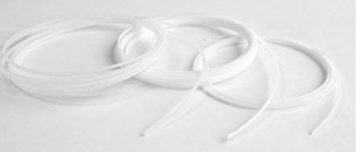
VD-3.6×1.8
A flexible waveguide is a piece of high-quality dielectric, which ends with transitions to standard waveguides with flanges.
For ease of operation, the waveguide is protected by an elastic shell.
Basic properties
Manufacturability of the connection;
Small losses and VSWR;
Economy.
Operating conditions
Operating temperature range from 5 to 50 ° C;
The relative humidity of the air is up to 98% at a temperature of 25 ° C.
Technical specifications
Waveguide cross section, mm 3.6×1.8
Flange type according to GOST RV 51914-2002
Frequency range, GHz 53.57-78.33
VSWR 1.25
Losses, 2.5 dB
Length, mm* 500
TEKHNOYAKS
Moscow
Produced in: Moscow
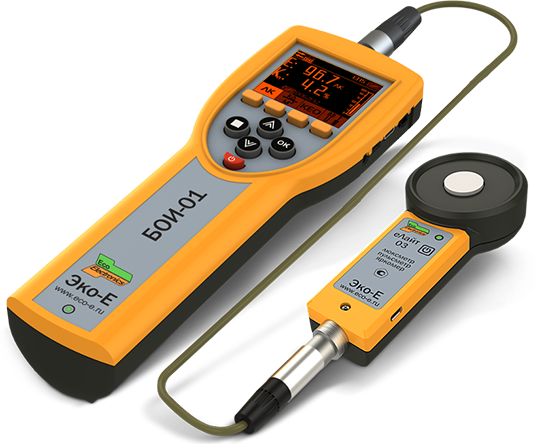

rhIGF-I
from
13 000 ₽
Insulin-like human growth factor I is a protein from the family of insulin-like growth factors, a hormone with a pleiotropic effect, which is involved in the growth processes of cell proliferation and differentiation, promotes cell survival, maintains their functions, and has anabolic effects.
SajStorLab
Moscow
Produced in: Moscow
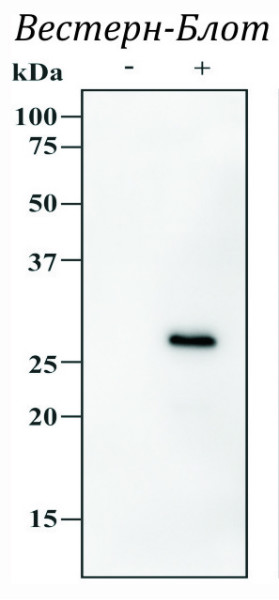
anti-GFP-WB
from
12 000 ₽
Green fluorescent protein (GFP) isolated from the jellyfish species Aequorea Victoria, consists of 238 amino acids with a molecular weight of about 27 kDa. GFP is characterized by two absorption peaks in blue light at 395 nm (major) and 475 nm (minor) and a fluorescence peak at 498 nm in the green range. At present, the gene for this protein and proteins derived from it, glowing with different colors, is used as a luminous marker in cell and molecular biology to study protein expression in cells and living organisms in vivo. GFP also allows purification of recombinant proteins, where GFP or its derivatives are used as an affinity label.
SajStorLab
Moscow
Produced in: Moscow
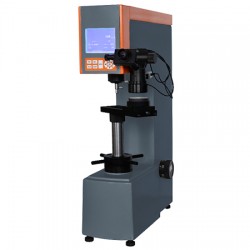
Metolab 702 Universal Hardness Tester
The universal METOLAB 702 device is a stationary hardness tester, a modification of METOLAB 701, equipped with a large LCD display, a built–in printer, and also having the functionality for statistical processing of measurement results (calculation of minimum/average/ maximum values, conversion of results into various scales, storing data in memory, etc.). The device is designed to determine hardness by scales Rockwell, Vickers and Brinell of various materials and products – steels, cast iron, non-ferrous metals, soft alloys, etc. The METOLAB hardness tester has high accuracy, performs measurements in a wide range, and also provides high repeatability of results.
Distinctive features of the stationary METOLAB 702 hardness tester:
Scales for Rockwell measurements: HRA, HRB, HRC;
Scales for Brinell measurements: HBW2.5/31.25, HBW2.5/62.5, HBW5/62.5, HBW2.5/187.5, HBW 10/100, HBW 1/30;
Vickers measuring scales: HV30, HV100;
Displaying all the necessary information on a large LCD screen;
Possibility of statistical processing of measurement results – calculation of minimum/average/maximum values, conversion of results into various scales, storing data in memory and much more;
Electromechanical drive for application and removal of load;
Prompt change of the applied load by turning the force change knob;
The ability to print the results on the built-in mini printer;
Built-in digital micrometer with backlight, magnification 37.5 and 75x.
Basic delivery package:
Stationary universal METOLAB 702;
Conical diamond Rockwell indenter (120° angle) - 1 pc.;
Vickers diamond indenter (136° angle) - 1 pc.;
Indenter with 1.5875 mm ball - 1 pc.;
Indenter with 2.5mm ball - 1 pc.;
Indenter with 5.0 mm ball - 1 pc.;
Large flat table 150 mm - 1 pc.;
Medium flat table 60 mm - 1 pc.;
V-shaped table 40 mm - 1 pc.;
Hardness measures - 1 set;
15x microscope - 1 pc.;
2.5x lens - 1 pc.;
5.0x lens - 1 pc.;
User Manual.
Metolab
Moscow
Produced in: Moscow
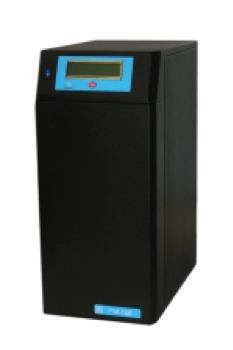
Pure nitrogen generator GCHA-21D
from
276 000 ₽
An analogue of GCHA-21, but equipped with a built-in system of catalytic purification of the resulting nitrogen from hydrocarbons. GCHA-21D nitrogen generators are designed to produce nitrogen of the highest purity in laboratory conditions.
The warranty period of operation of the generator is 18 months from the date of sale by the manufacturer.
Technical specifications
The grade of nitrogen produced according to GOST 9293-74 is high purity, grade I
The volume fraction of nitrogen is not less than, % vol.
(including impurities of inert gases: argon, neon, helium) 99,999
The volume fraction of oxygen is not more than, % vol. (ppm) 0.0005 (5 ppm)
The volume fraction of water vapor is not more than, % vol. (ppm) 0.0007 (7 ppm)
The volume fraction of hydrogen is not more than, % vol. (ppm) 0.0002 (2 ppm)
The volume fraction of the sum of carbon-containing compounds in terms of methane is not more than, % vol. (ppm)
(with a concentration of methane in the supply air not more than 5 ppm)* 0.00001 (0.1 ppm)
Maximum nitrogen capacity is not less than 21 liters/hour (350 ml/min)
Nominal output pressure of nitrogen is 4 ati
The time of setting the operating mode for single-shift operation is no more than 45 min
Nominal inlet air pressure is 6 ati
Maximum allowable inlet air pressure is 7 ati
Minimum inlet air pressure is 5 ati
Compressed air consumption, at nominal inlet pressure is no more than 300 l/h (5 l/min)
Power consumption is not more that 110 VA
Overall dimensions, (width x depth x height) are not more than, mm 230x425x510
Weight, not more than, kg 25
Working conditions:
Ambient temperature, °C from +10 to +35
Electric power supply from a single-phase AC network with a voltage of 220 ± 10%
and a frequency of 50 ± 1 Hz
Average full service life is at least 6 years
The generator for electrical safety meets the requirements of Class 1, type H according to GOST 12.2.025-76
NPP Himelektronika
Moscow
Produced in: Moscow
